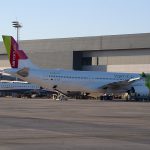The International Air Transport Association (IATA) has urged an urgent restoration of stable operations at El Dorado Airport (BOG). In the last two weeks, more than 90,000 passengers have been affected by delays and cancellations, exacerbated by factors external to the airlines. With the high season approaching, resolving this crisis is crucial.
IATA points out that Aerocivil has repeatedly applied Ground Delay Programs (GDP) at the airport, a global practice for managing air traffic influx. However, their continuous use indicates an imbalance between the demand for operations and the airport’s capacity, requiring a strategic solution.
The association questions whether the weather is the only cause of the current problems, emphasizing that adverse weather conditions should not cause so many disruptions. It highlights the need to ensure that El Dorado’s infrastructure is prepared to face these conditions, suggesting the activation of ILS Category III and surface radar to improve operational capacity in adverse weather conditions.
IATA also proposes extending the operating hours of other country airports and allocating greater capacity to regular aviation, especially during peak hours. Additionally, it emphasizes the importance of adequate personnel in the ATC Centers and control towers, and standardized processes to ensure smooth operations.
Peter Cerdá, IATA’s Regional Vice President for the Americas, underscores the importance of El Dorado as the main hub for air transport in the region, urging improvements in its efficiency and capacity.
«El Dorado Airport is the country’s main airport and plays a crucial role in air transport throughout the region, so it is imperative to improve its efficiency, strengthen its capacity, and enhance passenger experience, to continue increasing air connectivity, which is, in many cases, the only way to connect all Colombians internally and with the world,» he said.
A study conducted by IATA along with major airlines, government entities, and the airport operator, offers a unified operational diagnosis that serves as a basis for decision-making on the planning and optimization of the airport’s infrastructure and operational processes, highlighting opportunities for improvement that should be a priority.














